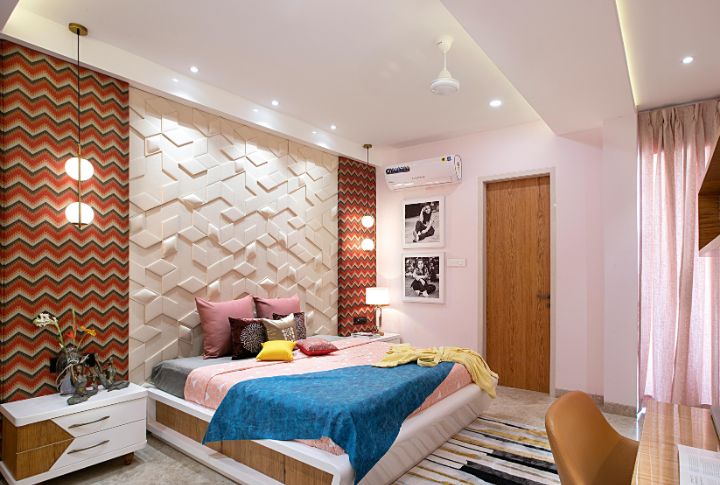
Some designers have the magic to make patterns mingle effortlessly and harmonize the entire space. The secret lies in understanding how to mix patterns and colors in a way that structure meets creativity. Let’s find out the secrets behind a flawlessly layered space.
Anchor Patterns With A Unified Color Palette
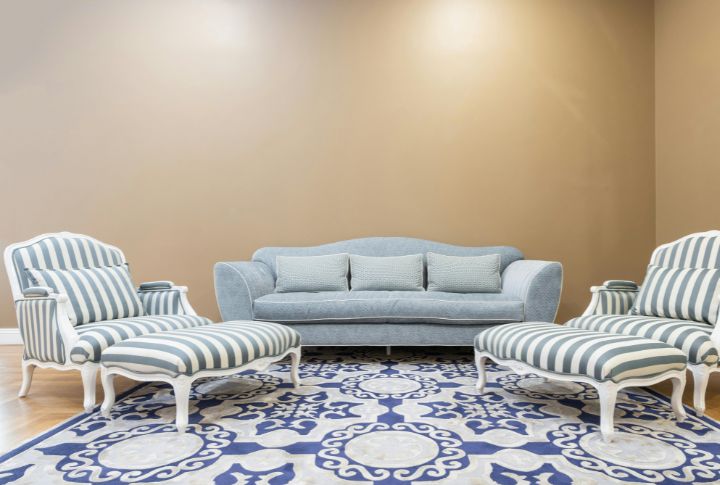
Without a shared color palette, patterns can clash rather than complement. Designers pick a dominant hue and make sure each pattern contains hints of it. A floral sofa with navy accents pairs seamlessly with a geometric rug featuring the same deep blue, instantly creating cohesion while allowing diverse designs to coexist.
Vary Pattern Scales For Visual Harmony

A mix of large, medium, and small-scale patterns prevents visual overload—a bold, oversized botanical print pairs beautifully with a tightly woven houndstooth fabric. The interplay of scale keeps the eye moving by balancing boldness with subtlety and ensuring that no single element dominates the composition.
Blend Different Pattern Types Thoughtfully

A room dominated by a single type of pattern risks becoming dull, yet the result is dynamic when stripes, florals, and abstract prints are used with purpose. For example, pairing a sharp chevron pillow with a paisley throw introduces a contrast. The interplay between organic and structured designs crafts a layered, visually engaging space.
Use Solid Colors To Balance Bold Patterns

Too many competing patterns can overwhelm a space. Solid colors act as buffers, giving the eye a place to rest. A boldly patterned wallpaper pops with a solid-colored sofa, while plain drapes keep multi-patterned bedding set from feeling too busy.
Limit The Number Of Patterns So It Doesn’t Overwhelm
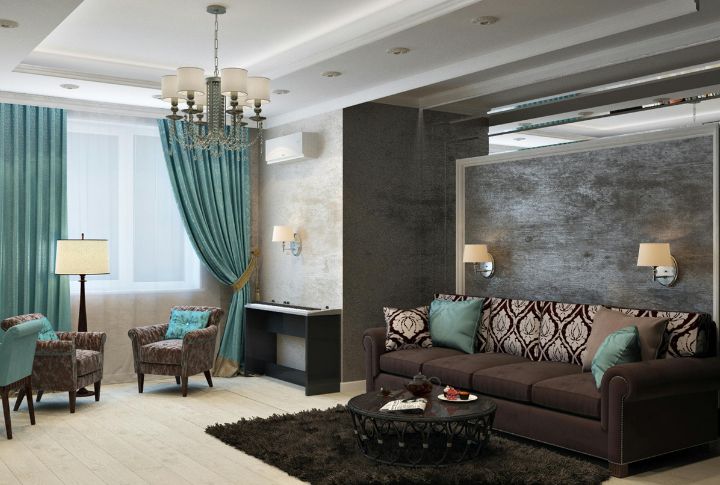
While variety adds interest, excess leads to chaos. Most designers follow the “rule of three”: a dominant pattern, a secondary complement, and a subtle accent. This trio creates depth without visual overload. Any more, and the space risks becoming a dizzying patchwork of competing designs.
Distribute Patterns Evenly Across The Space

Have you ever walked into a room where all the patterns are huddled in one corner? It feels off, right? Designers know that patterns need breathing room. A patterned chair here, a lampshade there—scatter them wisely. When balanced across pillows, rugs, and curtains, patterns stop competing and start complementing to create a seamless, natural flow.
Consider Texture When Mixing Patterns
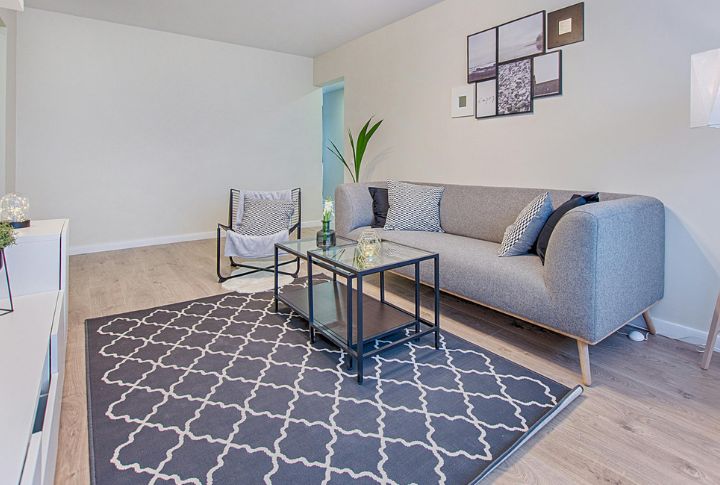
Flat patterns? No thanks. The secret sauce is texture. A linen-striped sofa with a plush velvet polka-dot pillow? That’s contrast done right. Mixing textures keeps things lively, adding depth that stops patterns from falling flat. When print and feel team up, the result is a space that looks as good as it feels.
Incorporate Neutral Patterns As Visual Rest Points

Not all patterns need to be loud. Subtle designs—like faint pinstripes or delicate tone-on-tone damasks—act as visual breathers. These neutrals bridge bold patterns, offering softness and balance without sacrificing style. A room heavy on patterns benefits from these understated elements to avoid feeling overworked.
Use Patterns To Highlight Focal Points
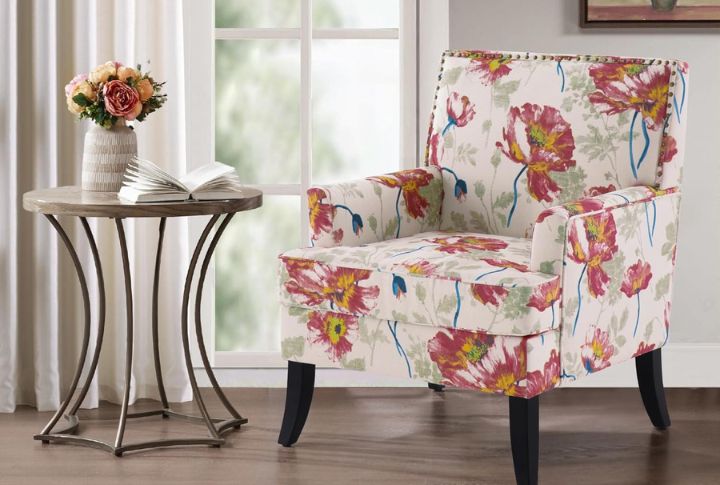
Designers know how to make a statement with patterns. A boldly printed accent chair steals the spotlight in a neutral room, instantly drawing the eye. On the other hand, a striking patterned rug grounds a seating area and defines its purpose. Strategic pattern placement guides focus and shapes the room’s story.
Combine Traditional And Modern Patterns For Eclectic Appeal
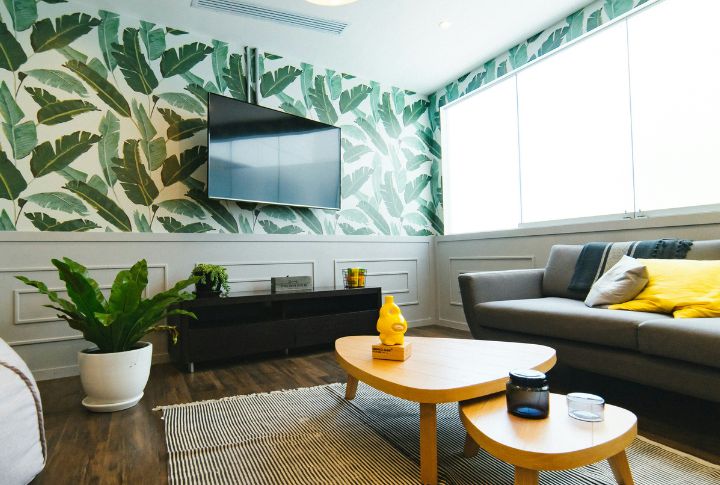
Mixing eras creates unexpected harmony. A vintage floral wallpaper paired with a sleek, graphic throw pillow introduces contrast in the best way. The secret? Balance. Ensuring at least one unifying element—color, scale, or texture—the blend of old and new feels curated rather than chaotic.

